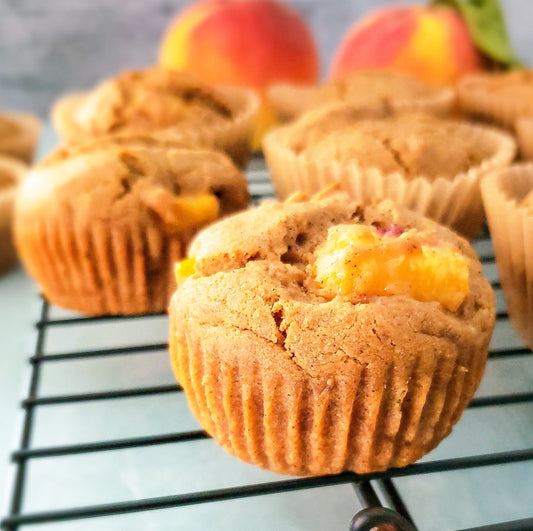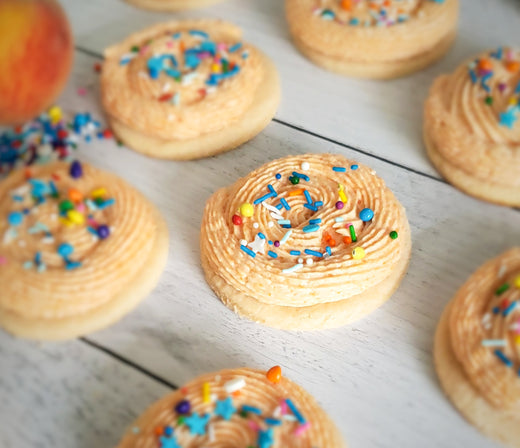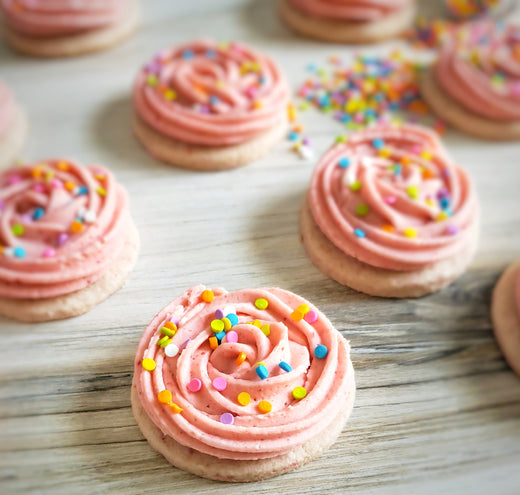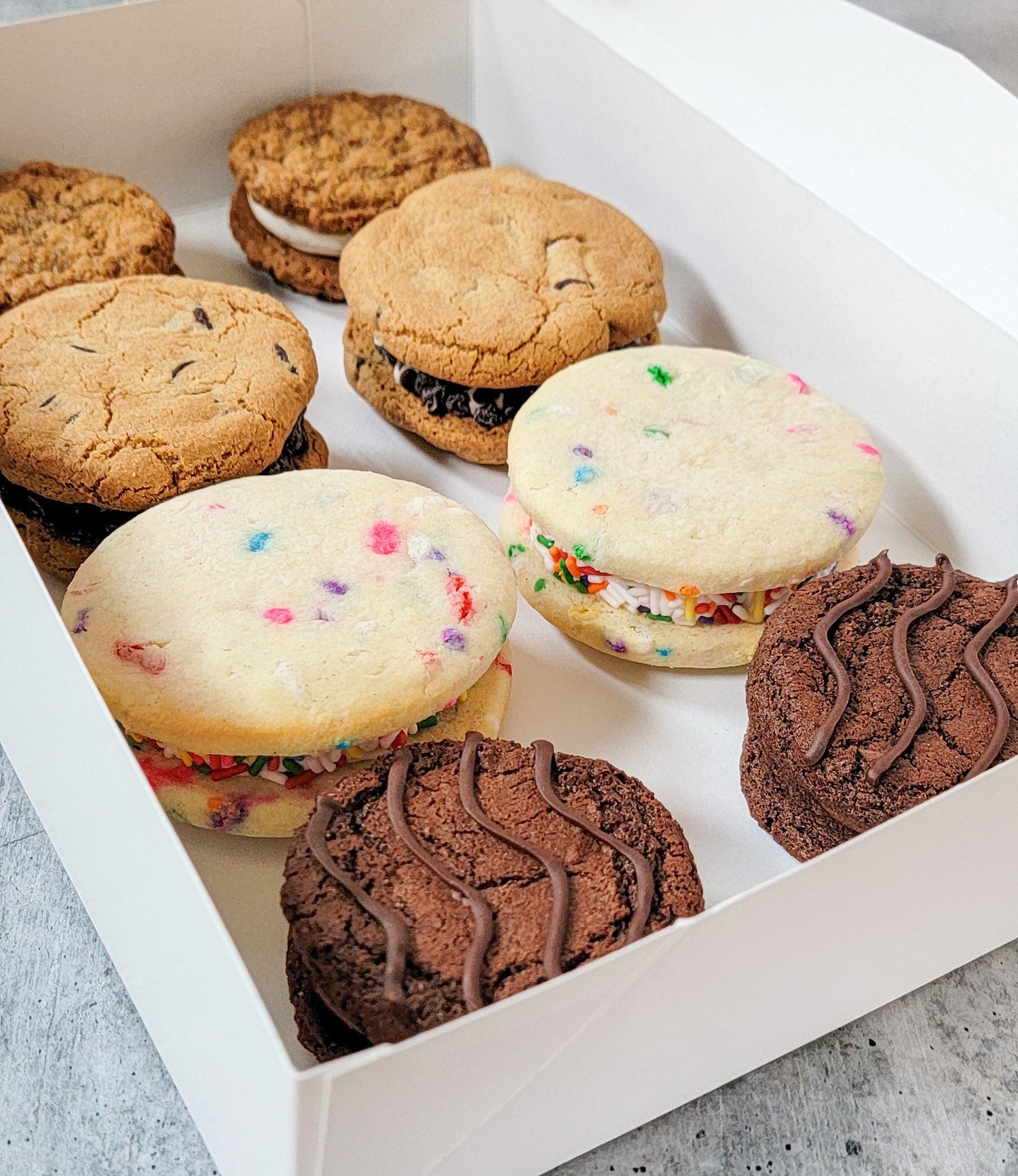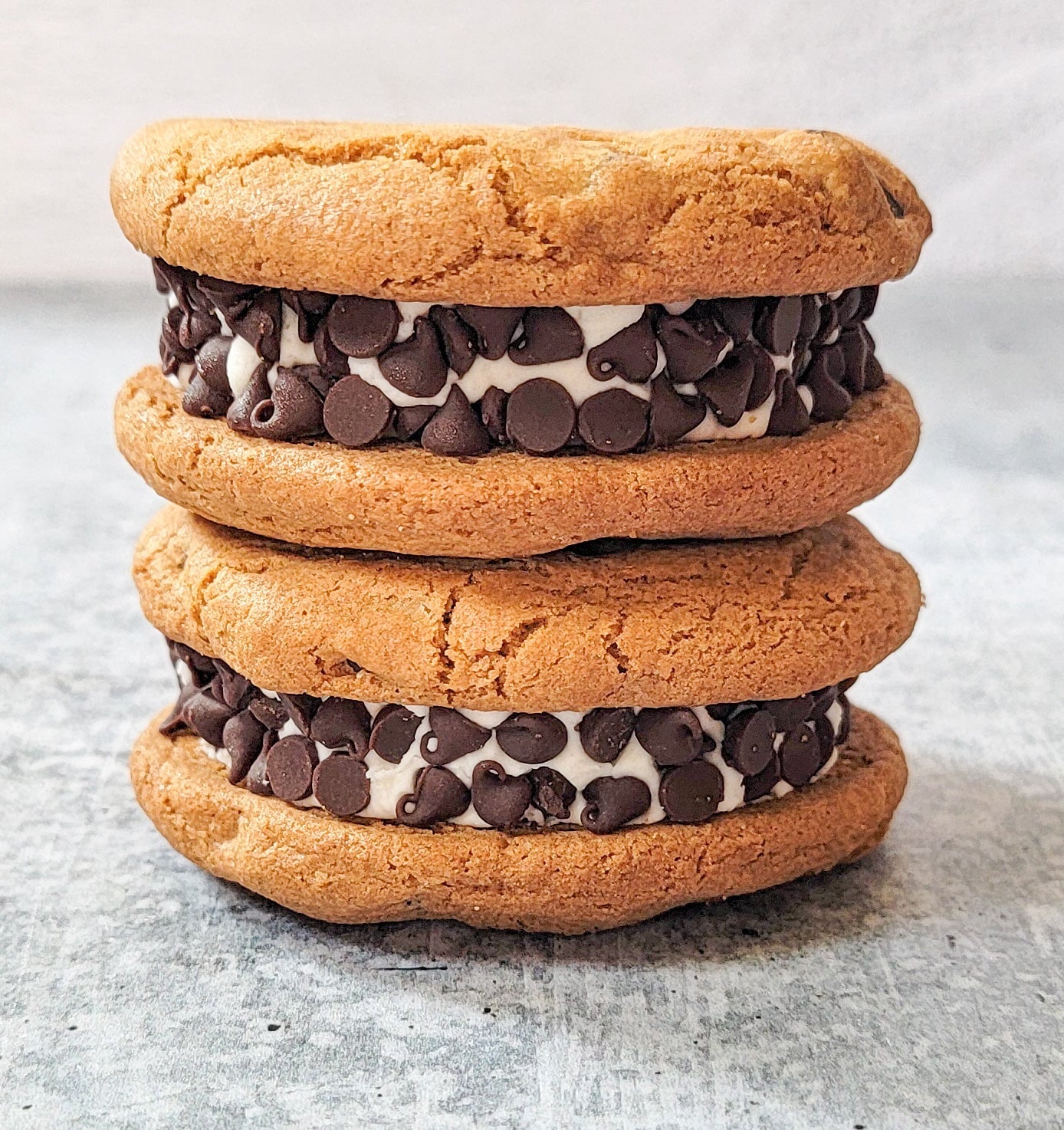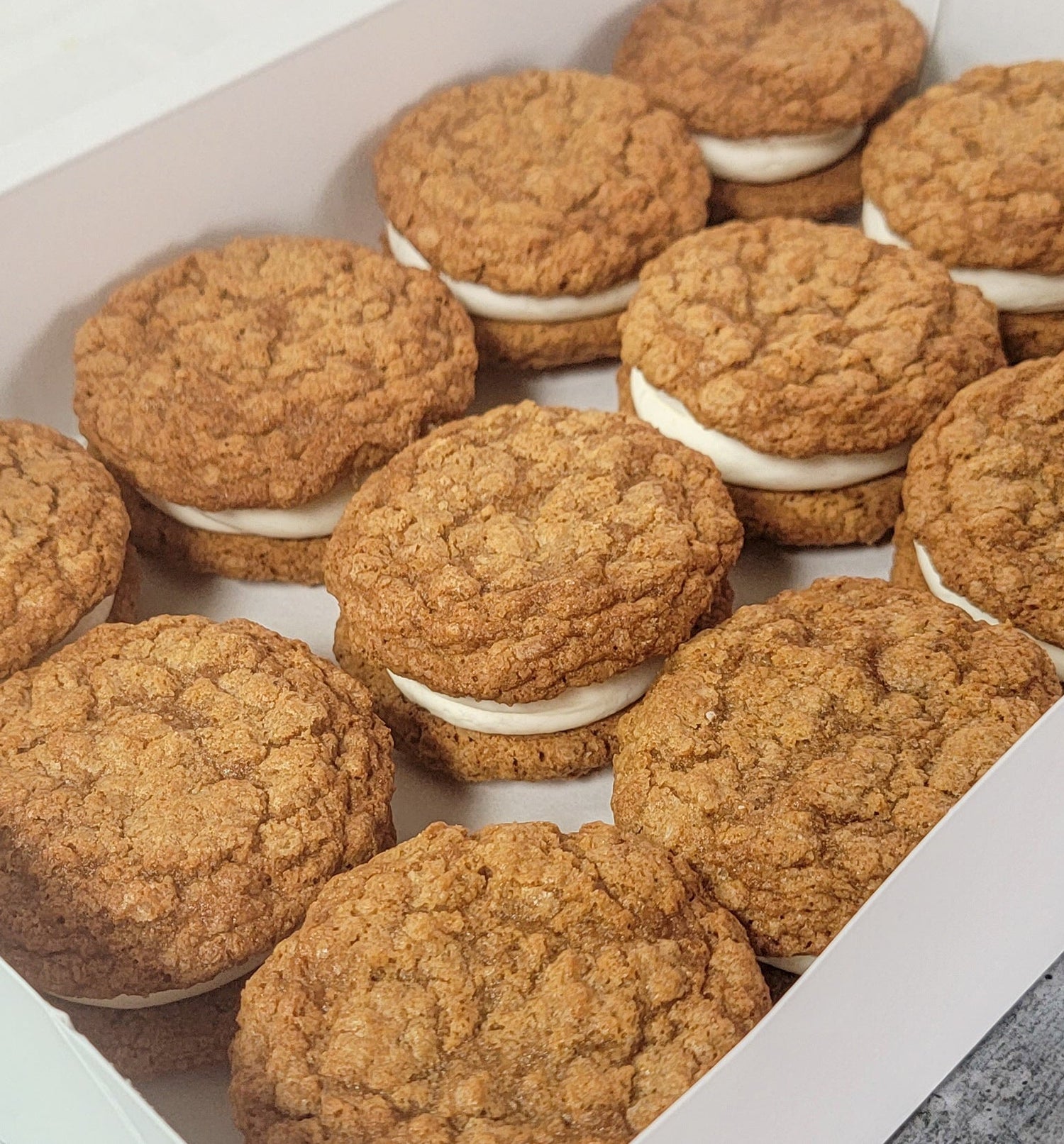
Peach Pie
Rebecca WilhelmShare
So many of you asked for my peach pie recipe, and I'm only too happy to share it! The only caveat is that there isn't a gluten free option yet. But I promise you'll be the first to know once I've mastered a gluten free pie crust!
Since this pie is not gluten free, I've actually never tasted it. But my husband described it this way: The filling is sweet and fruity, and just a little bit of tart, and the crust is perfectly flaky and will melt in your mouth. This is the pie I always make for my parents' August birthdays, and I often make it for Father's Day, too.
I seriously love making pie, especially the crust. So many people buy store-bought crusts because they're intimidated by the thought of making it themselves, but with the right equipment, it's actually really simple. Check out the recipe for step-by-step instructions. But before you purchase any ingredients, please consider buying my all-time favorite piece of equipment: a dough rolling bag. Note: I earn a small commission every time you make a purchase through an affiliate link. But there’s no extra cost to you! Thank you for supporting Roses & Whiskers.
Honestly, I love this thing. It makes rolling out dough and transferring it to the pan so, so easy. But be sure to flour it well! (Actually, the bag I linked to is even nicer than mine, and I am planning an upgrade now.) You'll also need a pastry blender. While you can use a fork instead, the pastry blender will make the job easier. And be sure you have a 9-inch pie pan and a rolling pin.
While this recipe uses a standard double crust, you could make a lattice or other crust design. Let me know in the comments if you'd like to see a tutorial.
Here are a few other tips and tricks to help the pie-baking process go smoothly:
- There are three types of peaches: cling, semi-cling and freestone. "Cling" means the fruit actually clings to the pit. They're harder to cut, and in my opinion, not as sweet. If you use clings, I actually recommend making the filling the day before, and then storing it in the fridge overnight. That will help bring out the flavor. "Freestone" peaches are really sweet and juicy. Be sure to drain the juice (see the instructions) if you're using freestone. Otherwise the filling will be super runny. And obviously "semi-cling" are somewhere in the middle.

- I mention this in the instructions, but don't forget to put the water for the crust in the refrigerator. Very cold water helps the crust form. Then as long as you use plenty of flour (or the dough rolling bag!) there's no need to chill the dough.
- The best day to make a pie is when it's humid. There's more moisture in the air, which means you won't need as much water to form the crust.
- Put the pie pan on the rimmed baking sheet before adding the aluminum foil. I know this sounds so simple, but it's actually a little difficult to move the pie pan once the foil is on. It often pops back off, which can be frustrating.
- The first piece of pie is always the most difficult to cut. I've found it's easier after you've refrigerated the pie overnight.
- Pie also freezes well!
Tag me @rosesandwhiskers on Instagram if you try this peach pie recipe and use the hashtag #rosesandwhiskers. And again, let me know in the comments if you want to see a lattice top tutorial. Happy baking! :)
Peach Pie

Peach pie takes time to make, but it's so worth the effort! The filling is sweet and fruity, and just a little bit tart, and the filling is flaky and will melt in your mouth.
Peach Filling Ingredients
- 5 cups chopped peaches (8 medium or 4 large peaches)
- 1 tsp lemon juice
- 1 cup granulated sugar
- 1/4 cup all-purpose flour
- 1/4 tsp cinnamon
- 2 tbsp unsalted butter
9-Inch Double Pie Crust Ingredients
- 2 2/3 cups all-purpose flour
- 2 tbsp granulated sugar
- 1 tsp salt
- 1 cup Crisco
- 3 to 8 tbsp cold water
-
Gently stir together the chopped peaches, lemon juice and sugar. Pour into a colander and let the juice drain for 30 minutes. (If the peaches are clings, there won't be much juice to drain. If the peaches are freestone,there will be a lot of excess juice!) Stir together the flour and cinnamon and mix with the drained peaches.

-
Start the crust while the peaches are draining. First, put a small bowl of water in the refrigerator. Mix together the flour, sugar and salt in a large bowl. Cut in small chunks of the Crisco using a pastry blender, until the mixture just begins to form a dough. (You'll notice a difference in texture as you're using the pastry blender.)

-
Sprinkle in the cold water, one tablespoon at a time, mixing with a fork until all the flour is moistened and the dough will hold its shape. Some days I only need 3 or 4 tablespoons and others I need all 8. It depends on how well you blended in the Crisco and on the humidity. (You don't want the dough to be sopping wet so be sure to check as you go.)

-
Divide the dough into two balls that are roughly the same size. Although I do like one ball to be slightly bigger, which is what I use for the bottom crust.

-
Roll out the slightly bigger ball on a well-floured surface until it's 9 to 10 inches in diameter. I usually lean toward the 10-inch side, because that makes it easier to form the pie edge. I highly recommend using a dough rolling bag, which makes it super easy to get the right size and shape crust and to transfer it into the pan. (See the text of the blog post for a link.) But you should still flour the bag!

-
If you used a rolling bag, carefully flip the crust into a 9-inch pan. If you didn't use a rolling bag, lightly flour the top of the crust and then fold it in half. Lightly flour again, and then fold in half one more time, so that the crust is folded into quarters and resembles a pizza slice. Carefully pick up the "slice" and place it in the pan, so that the pointed edge is in the middle. Then carefully unfold. You want no more than an inch overhang, so use a sharp knife to trim any excess dough.

-
If the crust tears, or if you have any uneven overhang, use the dough you trimmed off to fill in the gaps. Lightly press it together with flour and you won't even be able to tell that there was a gap! And if it tears a lot? No worries! Just roll it out again, using a little more flour this time.

-
Preheat the oven to 425°F (218°C) and spoon the filling on top of the bottom crust. Dab on the butter.

-
Now, repeat the process above with the top crust. Once you've placed the top crust on the filling and trimmed off any excess dough,fold the two edges together, so that the "seam" is on the bottom and not visible.

-
With floured fingers, form a crimp pattern around the edge .Go around as many times as necessary to make the crimp sharp and defined.

-
Then use a sharp knife to draw a "tree" in the middle of the crust. Really you can make whatever pattern you want. This is just to allow the pie to vent so that it doesn't explode in the oven.

-
Place the pie on a rimmed baking sheet and cover the edges of the crust with aluminum foil to prevent them from burning. (The baking sheet is in case the filling bubbles up and spills.) Bake for 40-45 minutes, until the crust is lightly browned. Take the foil off and bake for another 5 minutes,until the filling has begun to bubble. Total baking time should be anywhere from 45 to 50 minutes.

-
Let the pie cool on a wire rack. I've found it's easiest to cut and serve the pie once it's completely cooled. But feel free to warm up a slice in the microwave and serve with a scoop of vanilla ice cream!
-
Store tightly wrapped in the refrigerator. Enjoy!









